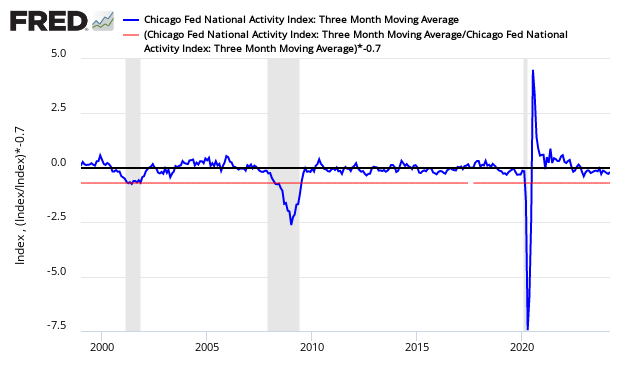The economy was growing in January 2014 based on the Chicago Fed National Activity Index (CFNAI) 3 month moving (3MA) average. This was the fifth month in a row that the economy was expanding above the historical trend rate of growth.

The three month moving average of the Chicago Fed National Activity Index (CFNAI) – which provides a summary quantitative value for all the economic data being released –declined from +0.26 (originally reported as +0.33 last month) to +0,10. The economy continues to expand at a rate above the historical trend rate of growth.
This index IS NOT accurate in real time (see caveats below) – and it did miss the start of the 2007 recession.
One more point, the headlines talk about the single month index which is not used for economic forecasting. Economic predictions are based on the 3 month moving average. This index is very noisy and the 3 month moving average would be the way to view this index in any event. Note that the single month index is very noisy which is a secondary reason to keep your eyes on the 3 month moving average.
This index is a rear view mirror of the economy.

A zero value for the index indicates that the national economy is expanding at its historical trend rate of growth, and that a level below -0.7 would be indicating a recession was likely underway. Econintersect uses the three month trend because the index is very noisy (volatile).
CFNAI Three Month Moving Average (blue line) with Historical Recession Line (red line)

As the 3 month index is the trend line, the trend is currently showing a decelerating rate of growth. As stated: this index only begins to show what is happening in the economy after many months of revision following the index’s first release.
CFNAI Three Month Moving Average Showing Month-over-Month Change

The CFNAI is a weighted average of 85 indicators drawn from four broad categories of data: 1) production and income; 2) employment, unemployment, and hours; 3) personal consumption and housing; and 4) sales, orders, and inventories.

